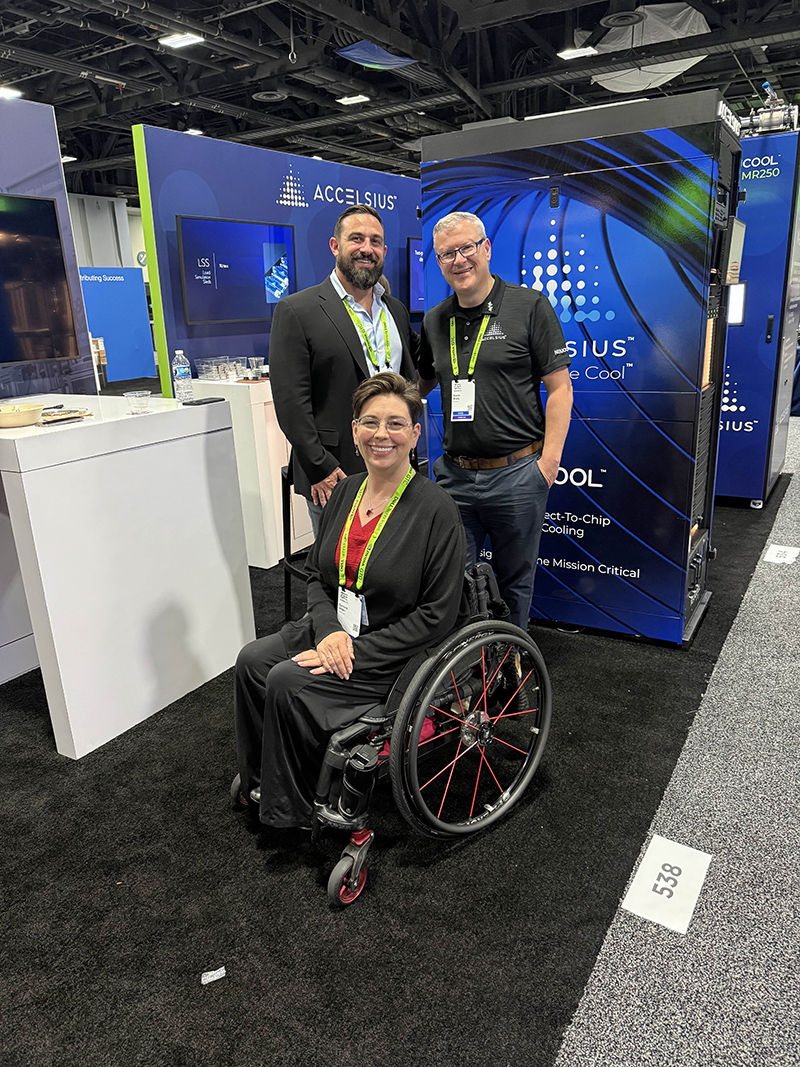NVIDIA GTC 2025: Powering the Future
 AI, Innovation, Digital Twins, and Real-Time Collaboration
AI, Innovation, Digital Twins, and Real-Time Collaboration
The 2025 NVIDIA GTC Conference in Washington, D.C. brought together innovators, developers, and engineers to explore how AI, simulation, and real-time collaboration are transforming industries. For TGS Tech and Apex Engine, the event was both inspiring and affirming. It showcased how closely our mission to build a unified real-time development ecosystem aligns with the global evolution of interactive design, digital twins, and intelligent simulation.
This year’s NVIDIA GTC Conference was far more than a display of next-generation GPU power. It was a deep exploration into how artificial intelligence, simulation, and collaborative development are converging to redefine how we create and connect.
From the opening keynote to the final panel, the energy throughout the conference was electric. Every conversation and presentation carried the same message: the future of innovation is real-time, connected, and intelligent. Teams are no longer limited by traditional boundaries. They are building and testing together, iterating in shared environments that evolve as fast as their ideas.
For TGS Tech, this message resonated deeply. Our work on Apex Engine focuses on removing the barriers between creativity and computation. The platform allows teams to collaborate directly inside the same 3D environment, linking AI-driven workflows, real-time simulation, and shared design tools.
Throughout the week, we met developers, researchers, and engineers from around the world who are tackling similar challenges, integrating AI into pipelines, running digital twin simulations faster, and creating interactive visualization tools that adapt in real time. These are exactly the kinds of problems Apex Engine was built to solve.
The week at GTC felt like looking into the future of our own technology. The innovations on display mirrored the vision we have been building toward: a live, collaborative development ecosystem powered by intelligence, accessibility, and scale.
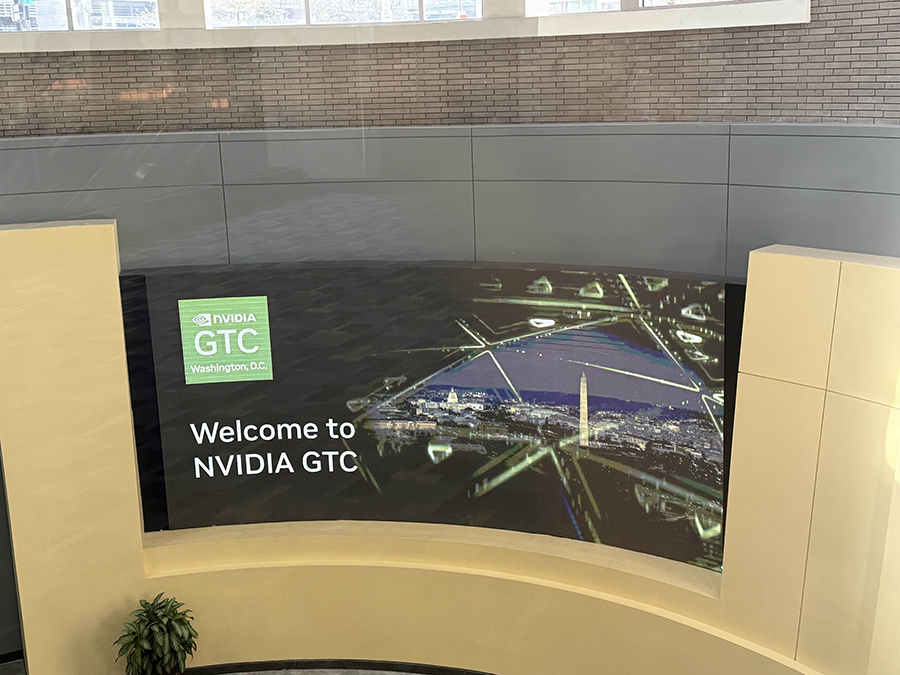 Accelerated Computing and the Era of Connected Intelligence
Accelerated Computing and the Era of Connected Intelligence
NVIDIA CEO Jensen Huang opened GTC with a powerful keynote on how accelerated computing and generative AI are transforming industries. From scientific research and manufacturing to entertainment and education, the pace of innovation is now driven by intelligent systems that learn, simulate, and collaborate in real time.
This philosophy reflects what drives our work at TGS Tech. Within Apex Engine, we have built an architecture that combines real-time collaboration, AI-assisted development, and scalable infrastructure. Developers and artists can work together seamlessly, designing, scripting, and testing live inside a single platform.
Just as NVIDIA envisions AI as a force multiplier across every field, Apex Engine turns that same principle into practice for interactive development. It allows creators to iterate instantly and share progress in real time across teams and devices.
The conversations around GPU-accelerated compute and distributed simulation at GTC underscored the importance of building adaptable platforms. Apex Engine’s hybrid structure, supporting both cloud and self-hosted environments, provides that flexibility while maintaining performance and collaboration at scale.
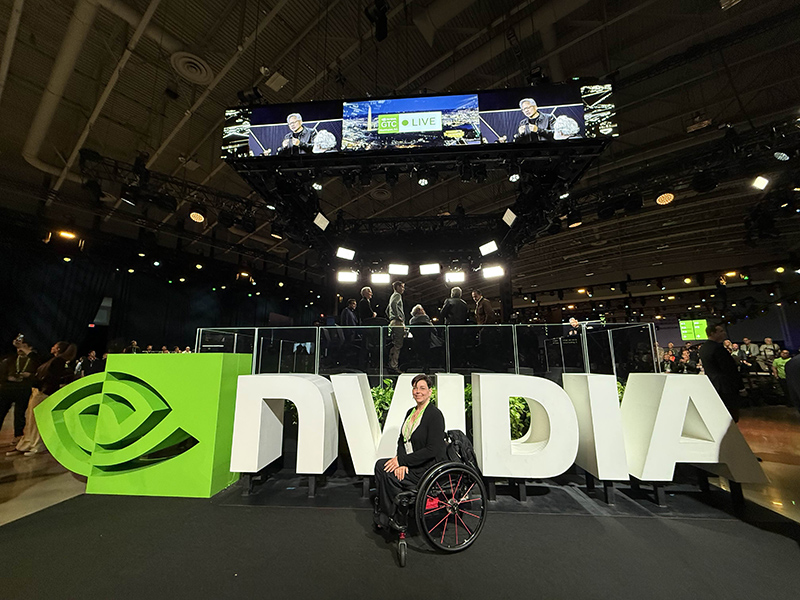 Accessibility, Inclusion, and the Human Side of AI
Accessibility, Inclusion, and the Human Side of AI
While much of GTC focused on hardware and algorithms, there was a strong human element throughout the week. NVIDIA placed clear emphasis on accessibility, inclusion, and open ecosystems, reinforcing that the future of AI should be built for everyone.
At TGS Tech, accessibility is a principle that defines both our culture and our products. Apex Engine was designed with inclusivity in mind from the start. From its intuitive UI and cross-platform functionality to its collaborative tools, every part of the engine supports accessibility for developers, educators, and creators alike.
We saw the same values reflected across GTC. Adaptive input systems, AI-driven captioning, and cloud-based simulation tools are making technology more open than ever before. These efforts align closely with our own mission: to make professional-level development tools available to all creators, regardless of background or resources.
In every sense, accessibility is not an afterthought. It is the foundation for innovation that truly reaches everyone.
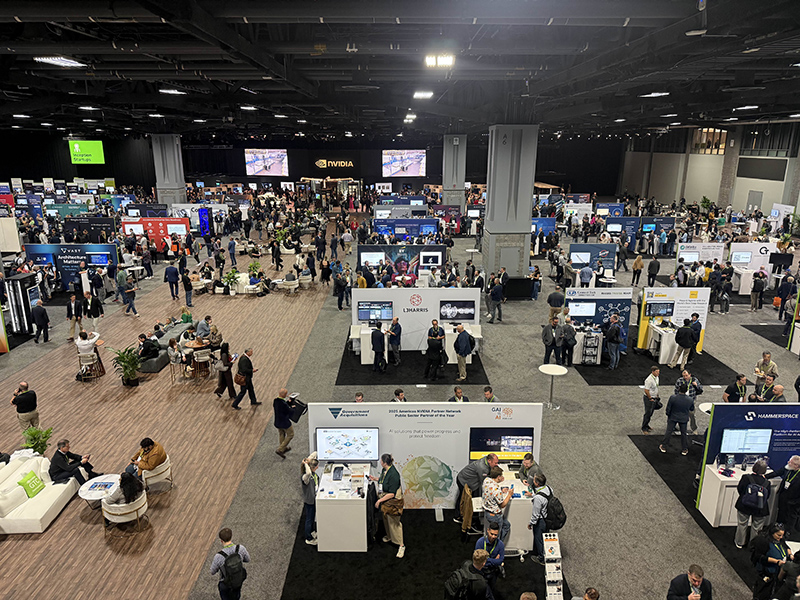 Digital Twins and Virtualized Design for a Smarter Future
Digital Twins and Virtualized Design for a Smarter Future
One of the most transformative topics at this year’s GTC was the evolution of digital twins and virtualized environments. NVIDIA demonstrated how technologies like Omniverse and Isaac Sim are combining with generative AI to build hyper-realistic simulations of physical systems. These applications are changing the way industries approach urban planning, architecture, manufacturing, and defense.
For TGS Tech, this is not new territory. Apex Engine has been built around the same vision, enabling teams to construct, simulate, and iterate digital worlds together in real time. What NVIDIA demonstrated in Omniverse parallels what Apex Engine delivers for developers and enterprises alike.
Apex Engine brings these ideas into an accessible, cloud-native ecosystem where:
- Teams collaborate live within shared 3D spaces.
- Physics-driven simulations support engineering, architectural, and training workflows.
- Cross-platform interoperability connects desktop, cloud, and embedded systems for seamless visualization and testing.
During the conference, we spoke with several teams who were building digital twins for architectural and industrial applications. Many shared their struggles with extended build times and isolated workflows. Even with advanced hardware, some early simulation setups took months to prepare before a single test could run.
That feedback highlighted the core advantage of Apex Engine, it removes those bottlenecks by providing a live, interactive simulation environment. Teams can edit parameters, test physics, and visualize results immediately without waiting for long compile or render cycles.
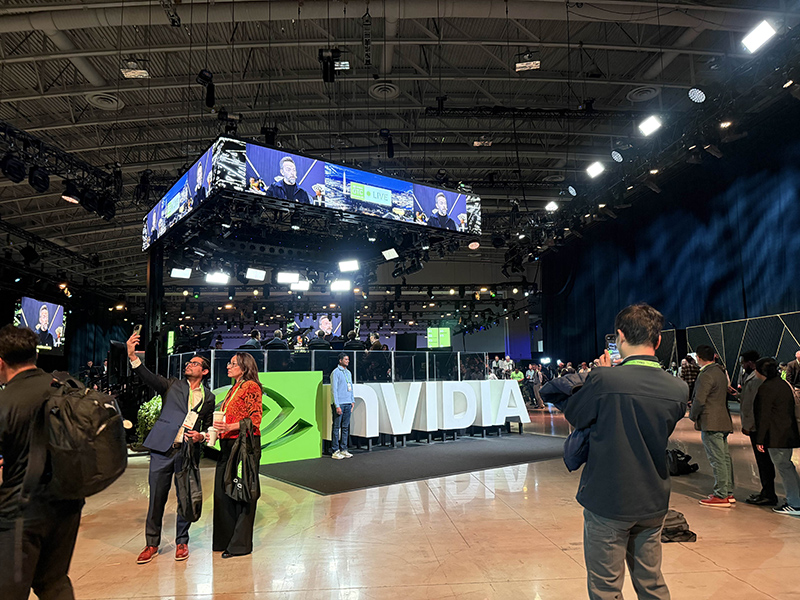 Developer Tools, Performance, and Programming Innovation
Developer Tools, Performance, and Programming Innovation
Among the most exciting parts of GTC were the sessions focused on Developer Tools and Techniques. NVIDIA showcased advancements in CUDA optimization, multi-language integration, and GPU-accelerated frameworks for simulation and rendering.
The technical deep dives into C++ and Python profiling, memory optimization, and cross-API development provided insight into how future tools will make code not only faster but smarter. This aligns directly with what Apex Engine is preparing to deliver through our upcoming AI Code Assist feature.
AI Code Assist is designed to help developers write, refine, and optimize code more efficiently. It integrates directly with Apex Engine’s scripting environment, offering intelligent suggestions, code context understanding, and real-time analysis. Like NVIDIA’s developer initiatives, our approach to code automation is built around collaboration and transparency, ensuring AI assists the developer, rather than obscuring the process.
The convergence of these innovations shows a shared goal between NVIDIA and TGS Tech: empowering developers to create more while coding less, supported by smarter tools and real-time insights.
 Sustainability and Scalable Infrastructure
Sustainability and Scalable Infrastructure
Sustainability was another key focus at GTC. Exhibitors such as Accelsius, Vertiv, Siemens, and AWS showcased technologies that optimize power and cooling efficiency, including liquid-cooled GPU systems and modular data center designs. These innovations directly support the scalable infrastructure goals we have at TGS Tech.
Through Apex Engine’s hybrid model, developers can choose how and where they deploy, cloud, self-hosted, or on-premises, while maintaining high performance and energy efficiency.
During these discussions, several teams shared their experiences building digital twins that took months to reach a usable state. Setup, calibration, and the first viable test runs often required extensive time and resources. For industries that rely on simulation to make real-world decisions, those delays are costly.
Apex Engine was built to eliminate that barrier. With real-time simulation and live collaboration, teams can move from concept to iteration in hours instead of months. They can see changes instantly, test collaboratively, and analyze outcomes continuously. This shift reduces not only time but also waste, energy use, and overhead, creating a more sustainable, scalable approach to innovation.
 Looking Ahead: Collaboration, Creativity, and Compute
Looking Ahead: Collaboration, Creativity, and Compute
As NVIDIA GTC 2025 came to a close, one theme echoed through every session: the future of technology will be real-time, collaborative, and intelligent. The next generation of development will be defined by shared environments where people can create together, powered by systems that think alongside them. That vision is the foundation of Apex Engine.
We believe that creativity and computation belong together. Apex Engine allows teams to build, test, and deploy seamlessly, transforming disconnected processes into a single unified workflow. From digital twins and AI-assisted coding to live collaboration and scalable deployment, we are building toward the same future that GTC showcased on the world stage.
What we experienced at GTC was more than inspiration. It was validation, a shared understanding that the most meaningful progress in technology happens when people and systems innovate together.
